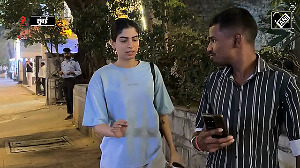The next time your child complains that his mathematics homework won't help him in real life, you can tell him that the subject could help cure blood cancer.
A new study has shown that maths and medicine could help cure patients suffering from CML or chronic myelogenous leukaemia with an optimally-timed cancer vaccine, where the timing is determined based on their own immune response.
Researchers have described their success in creating a mathematical model, which predicts that anti-leukaemia immune response in CML patients, using the drug imatinib, can actually be stimulated in a way to provide a cure for the disease.
"By combining novel biological data and mathematical modeling, we found rules for designing adaptive treatments for each specific patient. Give me a thousand patients and with this model, I can give you a thousand different customised treatment plans," the 'PLoS Computational Biology' journal quoted lead author Doron Levy of Maryland University as saying.
In their study, the researchers took into account the patient's natural immune response in conjunction with effects of imatinib, a drug that has been successful in putting CML patients into remission.
They wanted to see if they can develop a mathematical model, or set of rules, that increases chances for long-term remission in individual patients.
Over four years, they collected data from CML patients measuring the strength of each patient's immune response in the form of the numbers and the activity of the anti-leukaemia T cells, at different times during imatinib therapy.
"Our results suggest that it is not only the drug that sends the leukaemia into remission, it's also the natural immune response. After starting imatinib, the anti-leukaemia immune response gradually increases. However, it begins to weaken after it reaches a peak. This typically happens well into the treatment."
"Leukaemia cells are still present, but in relatively low numbers and that causes the immune response to wind down. Unfortunately, this is an ideal time for the cancer cells to develop drug resistance and render the therapy ineffective," Levy said.
The mathematical model suggests that the immune response of the patients should be boosted at the time when their immune response starts weakening.





